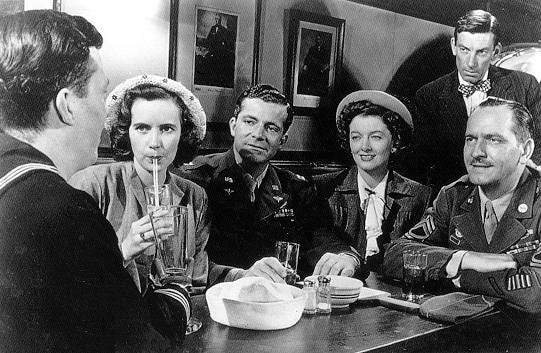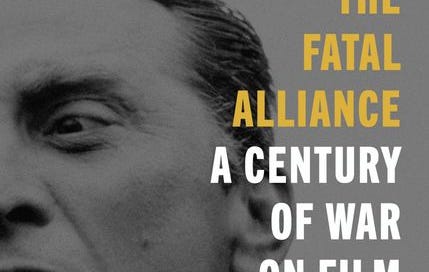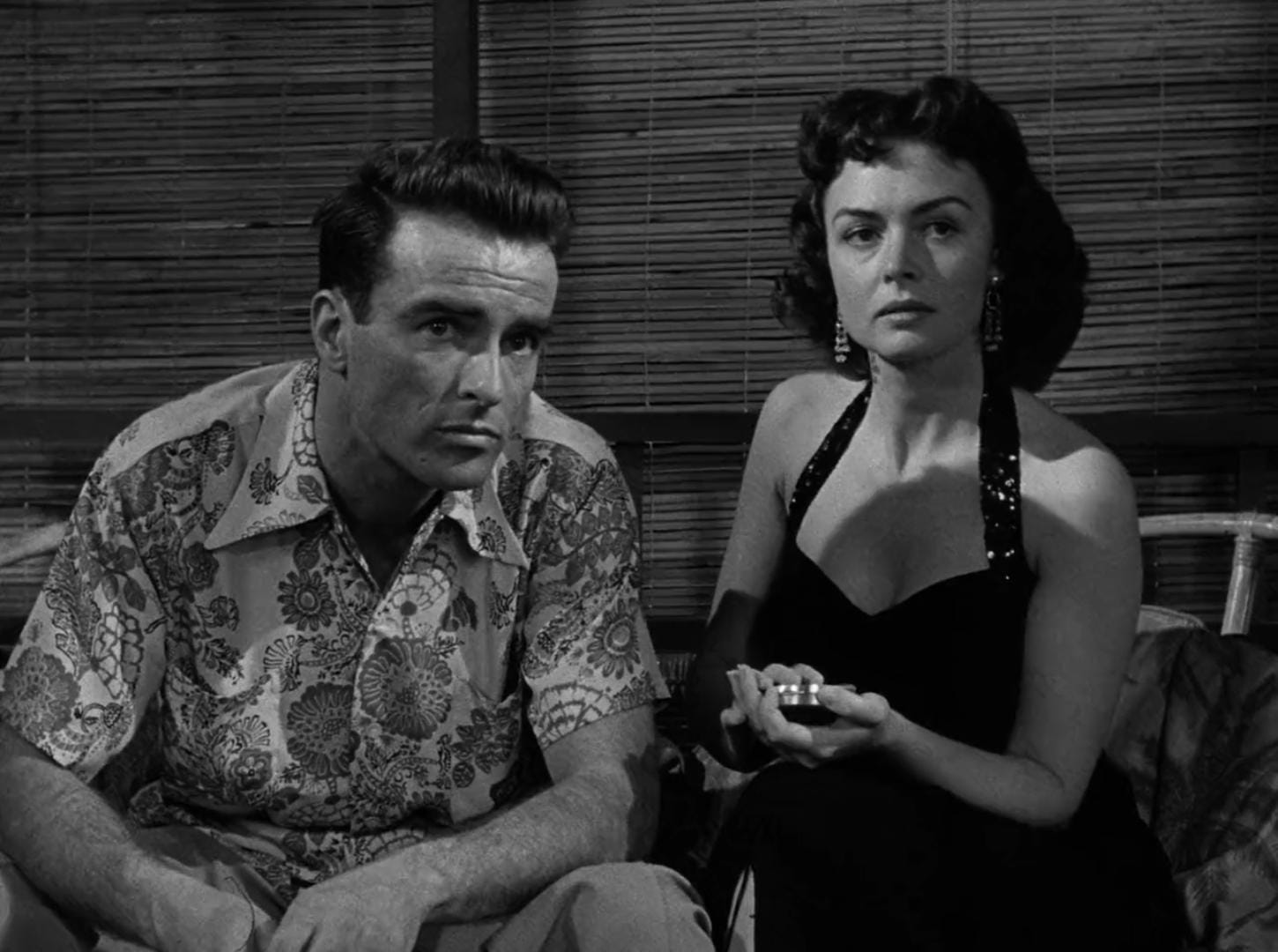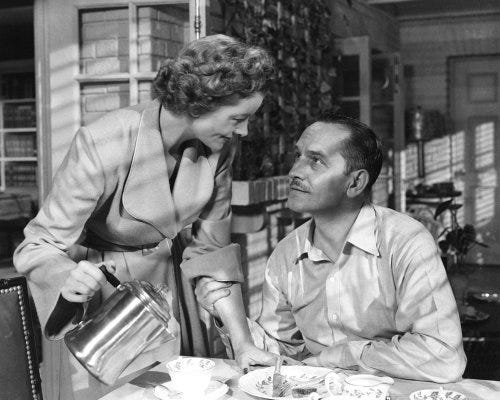David Thomson's Brilliant Take on War in Films
David Thomson, you’ve done it again. You’ve pulled me into the dark and had your way with me, in the best and kindest way.
The Fatal Alliance: A Century of War on Film
By David Thomson
Harper ($35)
With each new book from David Thomson—and I am grateful that they arrive with enviable regularity—I have the same sensation I have when I enter a dark movie theatre: Anticipation, delight, curiosity, a little anxiety. That great feeling of waiting for something—something—to happen. Please, I always ask of the experience, surprise me. In Thomson’s previous How to Watch a Movie, I felt that the underlying message was that we needed to submit.
I never feel comfortable referring to Thomson as a film critic. That title, that role, seems too small. Film theorist is a term that is as harmful to consciousness as propofol. What I think David Thomson is, for me, is a brilliant writer who writes better about film than almost everybody else, and he does not simply lecture. There is no sense of an extended Power Point presentation, with a man droning on about facts he’s picked up, index cards at the ready to prove his erudition. Thomson actually is surprised right along with us, and what he does with films and with actors is to force us to look at them all over again, and to confront the fact that both films and actors have shaped our sense of reality and of ourselves.
David Thomson’s latest book is The Fatal Alliance, in which he analyzes how films have presented war and its effects. It was not, I tell you now, a subject that excited me. However, David Thomson excites me, so I happily plunged in. Thomson has made me re-evaluate and admire Carey Mulligan even more, and question the work of Marlon Brando (Acting Naturally), the very scaffolding of the film industry (The Whole Equation: A History of Hollywood), Andrew Sarris and the means by which we judge the work of directors (A Light in the Dark). Thomson is, above all, a seducer, the man who, with pure motives and intentions, takes you into that dark movie theatre and promises to show you something new and amazing, as he did with Have You Seen…?, The Moment of Psycho, and even with his derided Nicole Kidman. David Thomson gets you home safely, but he gets you home changed.
And there is David Thomson, the showman and provocateur: “I’m warning you,” he warns early. “This book will not be comfortable. …Ask yourself whether you are up for it. Or are you one of those armchair generals who watches a massacre like a football match?”
Thomson also provokes by forcing you—or me—to re-read and re-watch things he writes about here. (My apologies to the publicity team at Harper’s for the time it took to write this review, but I had things to check up on.) For instance, Thomson writes of Fred Zinnemann’s 1953 Oscar winner “From Here to Eternity”: “For the post-1945 generation, ‘From Here to Eternity’ is a central experience, yet it has only a small flourish of battle when the Japanese planes descend on Pearl Harbor at the close of the story. The deeper struggle is between Private Robert E. Lee Prewitt and the US Army as he is hazed and victimized for not joining a regimental boxing team, the hobby of a lousy captain. This is the enlisted man against the system, with the Japanese as mere placeholders. There are thwarted love affairs between a sergeant and the rotten captain’s wife (Burt Lancaster and Deborah Kerr), and Prew and a hostess/hooker in town (Montgomery Clift and Donna Reed). If you saw the film at the right age you are in its regiment forever, lined up for eternity. There is also Maggio, also known as Frank Sinatra, in the stockade, a rowdy scrap of doomed life force.
“That stress on the love stories made a war picture more accessible to the female audience, Daniel Taradash’s clever screenplay shifted the balance of the novel and handled many elements that had been thought unfilmable. What emerged in the film was the pattern of its love affairs and their prospect for a better society. We wanted those couples to be together.”
As someone who grew up with parents, aunts and uncles loving “From Here to Eternity,” and thinking it a bracing, bold portrait of war, this was shocking, but it sent me to the James Jones novel, and while you can understand why Columbia and Zinnemann chose to focus on the love affairs and the human detritus of war, there are in the novel hard-hitting portraits of war, real war, not the wars of the human spirit. There is also the piercing nostalgia of James Jones for every street, every corner, every scent of Hawaii. (Joan Didion has already told us that Hawaii belongs to James Jones as Mississippi belongs to William Faulkner. You get that in the novel. You do not get that in the film via Daniel Taradash.) Still, I love the film, and you probably do as well.
You probably also admire Terrence Malick’s “The Thin Red Line,” which Thomson reveals as a continuation of “From Here to Eternity,” with Prewitt now inhabiting Private Witt (Jim Caviezel), AWOL, surrounded by crocodiles, birds, and insects, and suddenly arrested and thrust back into war, and, with Thomson’s theory, I was back and revisiting that film.
And are we a bit deranged to so love a film that is titled “The Best Years of Our Lives”? Really, Thomson asks, these were the best years? Thomson can remember war raids and rations. But let him tell it: “…it was the movie event of 1946, an experience devoutly entered into by the world that had survived. Running its patient 172 minutes and having cost between $2 and $3 million, it earned over $23 million in America and was admired all over the Allied world. As a child of five in south London I was not allowed to see it—it was said to be too grown-up—but I was in no doubt about the respect my elders had for it. Only one detail trouble me: that word ‘best’ years of our lives. In a house hit three times by bombs (or it could have been stray British fire—you kept an open mind), I trusted that the war had been a bad thing. I had an uncle who was in a prisoner-of-war camp somewhere over there; the father of my best friend was in France; my own father was ‘away’—that could have been because he was engaged in war work, making radios, but I suspect he just preferred to be way (you kept an open mind).”

Thomson isn’t taking a dump on William Wyler’s film (that Myrna Loy/Fredric March greeting!), but he is looking—and asking us to join him—in seeing that we have our vision about war, and people, clouded by the romanticism of films we’ve loved and to which we gave greater respect for “truth” and “power” than they might have deserved. But, hey, he seems to imply, it’s only a movie. The truth is your responsibility. What Wyler’s film gave us was a restorative pat on the back for surviving, perhaps not in a camp, or in a hospital recuperating from lost limbs, but even if you had a victory garden and pined for your boyfriend in comfortable American suburbia, you cam through. You played a part in getting American through it all. Who is better than we are?
Throughout the book Thomson forces us to see things anew: August of 1914; the work of Ridley Scott; the power of Mike Nichols’ “Catch-22” that it has previously been denied. Who but David Thomson could revisit King Vidor’s cherished “The Big Parade” and force us to attach to it Virginia Woolf’s Mrs. Dalloway? (Yes, I watched the film again, and read the novel again. I recommend both.)
I have a feeling that David Thomson hates people who spoil movies for others, and I don’t want to spoil this book for you. Just read it, even if, like me, the idea of contemplating war is not your favorite or preferred thing. But this really is not just a book about how films have treated war, but a fascinating, coruscating study of how films have shaped our minds and feelings about something that terrifies us, grips us, and, as I write this, continues to be the means by which people exert power or achieve it.
What can I say? David Thomson, you’ve done it again. You’ve pulled me into the dark and had your way with me, in the best and kindest way. I await your next set of discoveries.






